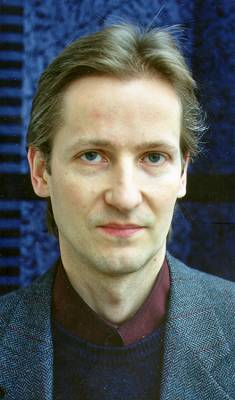|

Spiritual journey
Martin Torp's oratorio 'Siehe, ich mache alles neu',
appreciated by ROBERT ANDERSON
It is an awesome experience slowly to descend the steps on the island of Patmos
that lead to the grotto, the traditional site where St John wrote the book of Revelation.
There is a hollow in the rock where he is supposed to have rested his head, a grip to
assist his rising for prayer or a turn-about, a rough-hewn lectern for the young
Prochorus, companion to the aged John in countless icons, to write down the seering
vision of his master, and brooding oppressively over all the mighty rock cleft into three
by the voice of God. John was probably an exile on Patmos, fleeing the persecution of
Domitian. Perhaps he had been in Rome when Peter and Paul perished under Nero. Certainly he
knew of the great conflagration there, of the earthly Jerusalem's fall and the devastating
eruption of Vesuvius that scattered ash as far as Egypt and Syria. Much in Revelation
is sombre, but it ends in radiant contemplation of the New Jerusalem, where were no temple,
sun or moon, because the Lord God and the Lamb were both light and tabernacle. 'Behold, I
make all things new', said the voice from the throne; and that is the title of Martin Torp's
impressive oratorio, given its first performance on 8 November 2003 in the Lorenzkirche,
Nuremberg.

German composer, pianist and painter Martin Torp (born 1957)
|
John was bidden address Revelation to the seven churches of Asia, and it is the
number seven that haunts the whole book. In making his libretto from the biblical text,
Martin Torp has boldly put that figure at the centre of his scheme. So there are seven seals,
seven trumpets (German 'Posaunen'), and seven angels with the seven vials of God's wrath.
The obvious risk is monotony, but Torp's orchestral panoply is such and his resource in its
deployment so skilful that the interest rather mounts as the totals are piled up. If there
are sections with seven beats to a bar, and ostinatos created from seven notes, the
symbolism is obvious and apt.

Robert Anderson (left) in conversation with Martin Torp. Photo © 2003 Arne Winkler
|
Continue >>
Copyright © 18 January 2004
Robert Anderson, London UK

|

